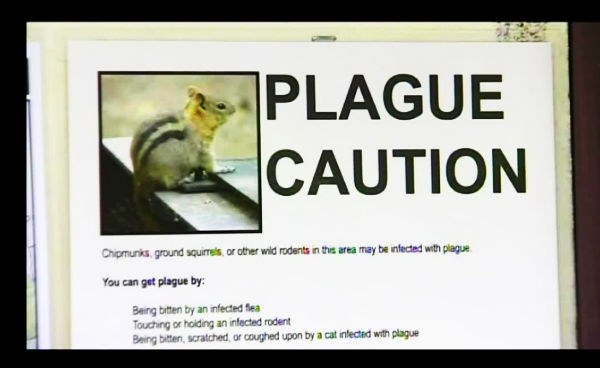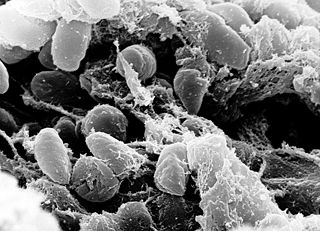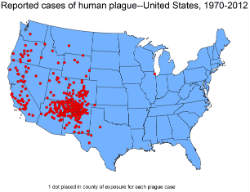Teen contracts plague
Bitten by infected fleas at Yosemite
 A warning notice at Yosemite
A warning notice at Yosemite
|
|

Yosemite Valley: Beauties of nature conceal microbes causing black death

SEM showing a mass of Yersinia pestis bacteria, the cause of bubonic plague, in the foregut of a flea
8/30/2015 — She was hiking with her family in Yosemite National Park this summer when 18-year-old Hannah Lindquist of Thomasville, Georgia, was likely bitten by a flea infected with bubonic plague, according to a report by Georgia Health News. Four days after she returned from California to Georgia, she developed swollen lymph nodes, fever and severe body pain.
Her mother Heather Lindquist knew the symptoms of plague, having recently read a story about plague in Yosemite. and knew there had been at least one other case of plague contracted in Yosemite. The family rushed to Archbold Medical Center, where she was treated with Doxycyline, an antibiotic and hospitalized.
She has been released from the hospital and is recovering her strength and stamina at home. Hannah is a pre-med and biology major at Valdosta State University and hopes to practice medicine, but she is at home this semester, resting, according to her father, attorney Ben Lindquist.
Black plague is endemic in rodents west of the Mississippi, such as rats, chipmunks and squirrels. Another person contracted plague after a visit to Yosemite. Two people in Colorado contracted plague this summer, and both died.
Plague isn’t passed from human to human unless it becomes a lung infection—pneumonic plague—and the infected person is coughing. Since it arrived in the United States in 1900, more than 1,000 cases of black plague have been confirmed in the country.
In the 1300s, black plague—also called black death—killed millions of people in Europe, who knew nothing about how fleas spread the disease.
Plague came to the U.S. around 1900 (map showing where plague now occurs in U.S.
More about plague in the U.S. >>
